Sidusglacies - ⚡️


More Posts from Sidusglacies and Others

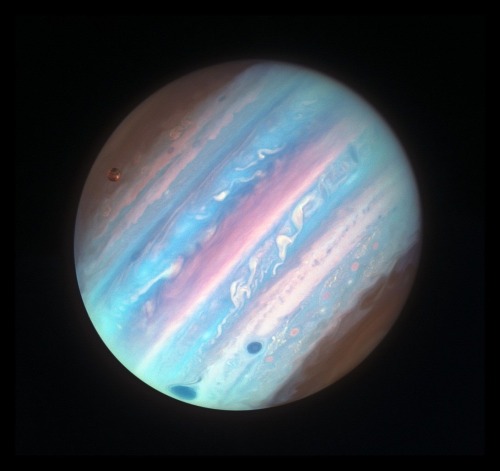
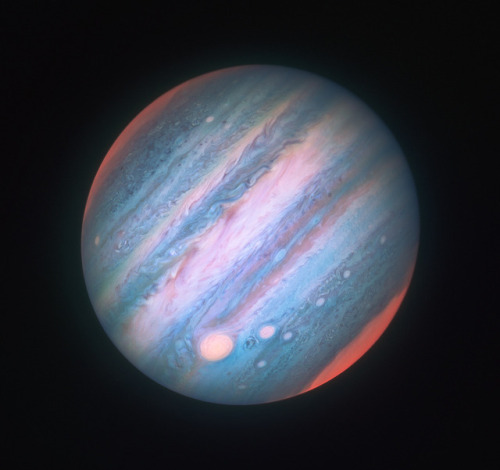
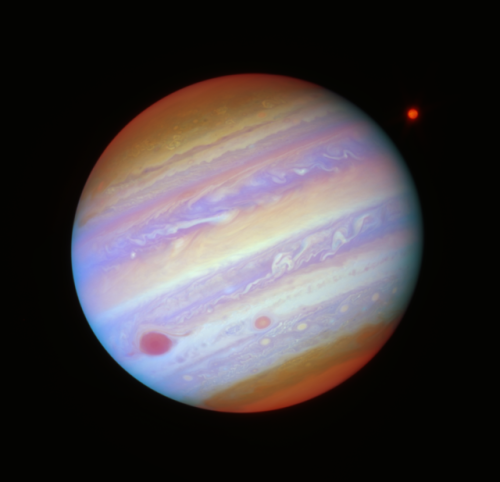
Jupiter (filtered) by Judith Schmidt.

1973 NASA art by Rick Guidice visualizes the idea of a Pioneer probe using Jupiter’s gravity to slingshot itself toward the outer planets and beyond.









the moon is a loyal companion



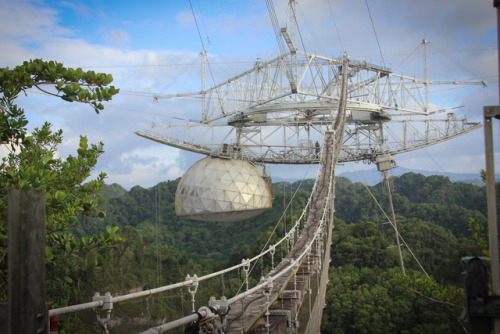

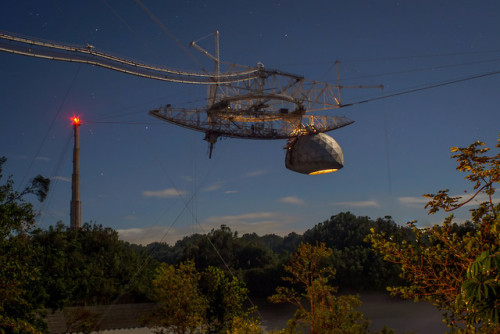
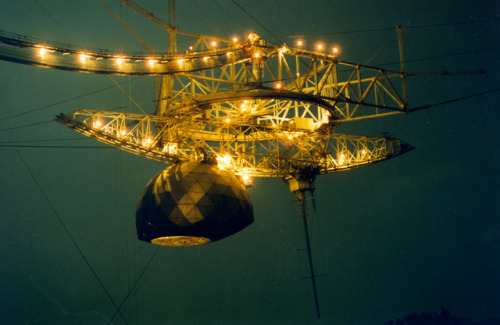
Arecibo Observatory
The Arecibo Observatory is a radio telescope in the municipality of Arecibo, Puerto Rico. This observatory is operated by University of Central Florida, Yang Enterprises and UMET, under cooperative agreement with the US National Science Foundation (NSF). The observatory is the sole facility of the National Astronomy and Ionosphere Center (NAIC), which is the formal name of the observatory. From its construction in the 1960s until 2011, the observatory was managed by Cornell University.
For more than 50 years, from its completion in 1963 until July 2016 when the Five hundred meter Aperture Spherical Telescope (FAST) in China was completed, the Arecibo Observatory’s 1,000-foot (305-meter) radio telescope was the world’s largest single-aperture telescope. It is used in three major areas of research: radio astronomy, atmospheric science, and radar astronomy.
Many scientific discoveries have been made with the observatory. On April 7, 1964, soon after it began operating, Gordon Pettengill’s team used it to determine that the rotation period of Mercury was not 88 days, as formerly thought, but only 59 days. In 1968, the discovery of the periodicity of the Crab Pulsar (33 milliseconds) by Lovelace and others provided the first solid evidence that neutron stars exist. (Crab pulsar sound by Arecibo Observatory)

In 1974, Hulse and Taylor discovered the first binary pulsar PSR B1913+16, an accomplishment for which they later received the Nobel Prize in Physics. In 1982, the first millisecond pulsar, PSR B1937+21, was discovered by Donald C. Backer, Shrinivas Kulkarni, Carl Heiles, Michael Davis, and Miller Goss. This object spins 642 times per second and, until the discovery of PSR J1748-2446ad in 2005, was identified as the fastest-spinning pulsar.
The Arecibo Message

In 1974, the Arecibo Message, an attempt to communicate with potential extraterrestrial life, was transmitted from the radio telescope toward the globular cluster Messier 13, about 25,000 light-years away. The 1,679 bit pattern of 1s and 0s defined a 23 by 73 pixel bitmap image that included numbers, stick figures, chemical formulas and a crude image of the telescope. source

david_shute


Lenticular Clouds
Fiordo Última Esperanza, Magallanes & La Antartica Chilena.

What are Trans-Neptunian object?
A trans-Neptunian object (TNO), also written transneptunian object, is any minor planet or dwarf planet in the Solar System that orbits the Sun at a greater average distance than Neptune, which has a semi-major axis of 30.1 astronomical units (AU).
The first trans-Neptunian object to be discovered was Pluto in 1930. It took until 1992 to discover a second trans-Neptunian object orbiting the Sun directly, 15760 Albion. The most massive TNO known is Eris, followed by Pluto, Haumea, Makemake, and Gonggong. source

-
 bexiescorner liked this · 2 months ago
bexiescorner liked this · 2 months ago -
 zoroslover liked this · 3 months ago
zoroslover liked this · 3 months ago -
 sinking-flight reblogged this · 4 months ago
sinking-flight reblogged this · 4 months ago -
 mufflesound liked this · 4 months ago
mufflesound liked this · 4 months ago -
 obscured-selenelion reblogged this · 4 months ago
obscured-selenelion reblogged this · 4 months ago -
 friskheart000 liked this · 4 months ago
friskheart000 liked this · 4 months ago -
 ash-unhinged444 liked this · 4 months ago
ash-unhinged444 liked this · 4 months ago -
 babiejay liked this · 4 months ago
babiejay liked this · 4 months ago -
 tinieroyalty reblogged this · 4 months ago
tinieroyalty reblogged this · 4 months ago -
 0crispinn liked this · 4 months ago
0crispinn liked this · 4 months ago -
 tinitinypup reblogged this · 4 months ago
tinitinypup reblogged this · 4 months ago -
 tinitinypup liked this · 4 months ago
tinitinypup liked this · 4 months ago -
 usagihellsing liked this · 4 months ago
usagihellsing liked this · 4 months ago -
 puppyieinnit reblogged this · 4 months ago
puppyieinnit reblogged this · 4 months ago -
 puppyieinnit liked this · 4 months ago
puppyieinnit liked this · 4 months ago -
 foreverashapeshifting-autistic liked this · 4 months ago
foreverashapeshifting-autistic liked this · 4 months ago -
 goblin-spider liked this · 4 months ago
goblin-spider liked this · 4 months ago -
 esoteric-nightmare liked this · 4 months ago
esoteric-nightmare liked this · 4 months ago -
 sleepiest-ghostie reblogged this · 4 months ago
sleepiest-ghostie reblogged this · 4 months ago -
 sleepiest-ghostie liked this · 4 months ago
sleepiest-ghostie liked this · 4 months ago -
 littlefaefeather liked this · 4 months ago
littlefaefeather liked this · 4 months ago -
 sweetsugarpuff reblogged this · 4 months ago
sweetsugarpuff reblogged this · 4 months ago -
 sweetsugarpuff liked this · 4 months ago
sweetsugarpuff liked this · 4 months ago -
 wereviolet liked this · 4 months ago
wereviolet liked this · 4 months ago -
 oftlunarialmoon reblogged this · 4 months ago
oftlunarialmoon reblogged this · 4 months ago -
 dreamy-pastels reblogged this · 4 months ago
dreamy-pastels reblogged this · 4 months ago -
 escalade30 liked this · 4 months ago
escalade30 liked this · 4 months ago -
 scenecoreglitz reblogged this · 5 months ago
scenecoreglitz reblogged this · 5 months ago -
 annarmpq0 liked this · 7 months ago
annarmpq0 liked this · 7 months ago -
 luek liked this · 7 months ago
luek liked this · 7 months ago -
 wi-fi-angel reblogged this · 8 months ago
wi-fi-angel reblogged this · 8 months ago -
 wi-fi-angel liked this · 8 months ago
wi-fi-angel liked this · 8 months ago -
 rivercreature liked this · 9 months ago
rivercreature liked this · 9 months ago -
 blathers reblogged this · 9 months ago
blathers reblogged this · 9 months ago -
 secretlyacat-aesthetic reblogged this · 10 months ago
secretlyacat-aesthetic reblogged this · 10 months ago -
 atlantisthorn reblogged this · 10 months ago
atlantisthorn reblogged this · 10 months ago -
 cosmic-vulture liked this · 10 months ago
cosmic-vulture liked this · 10 months ago -
 frogsforest liked this · 10 months ago
frogsforest liked this · 10 months ago -
 alixisherebutringagain liked this · 10 months ago
alixisherebutringagain liked this · 10 months ago -
 schizoalienboy reblogged this · 10 months ago
schizoalienboy reblogged this · 10 months ago -
 schizoidalia reblogged this · 10 months ago
schizoidalia reblogged this · 10 months ago -
 panicbar reblogged this · 11 months ago
panicbar reblogged this · 11 months ago -
 puffpal7 liked this · 11 months ago
puffpal7 liked this · 11 months ago -
 sacrificialcatblood liked this · 1 year ago
sacrificialcatblood liked this · 1 year ago -
 artistaspiring liked this · 1 year ago
artistaspiring liked this · 1 year ago -
 halloweenvalentine1997 liked this · 1 year ago
halloweenvalentine1997 liked this · 1 year ago -
 mossworldsstuff liked this · 1 year ago
mossworldsstuff liked this · 1 year ago
